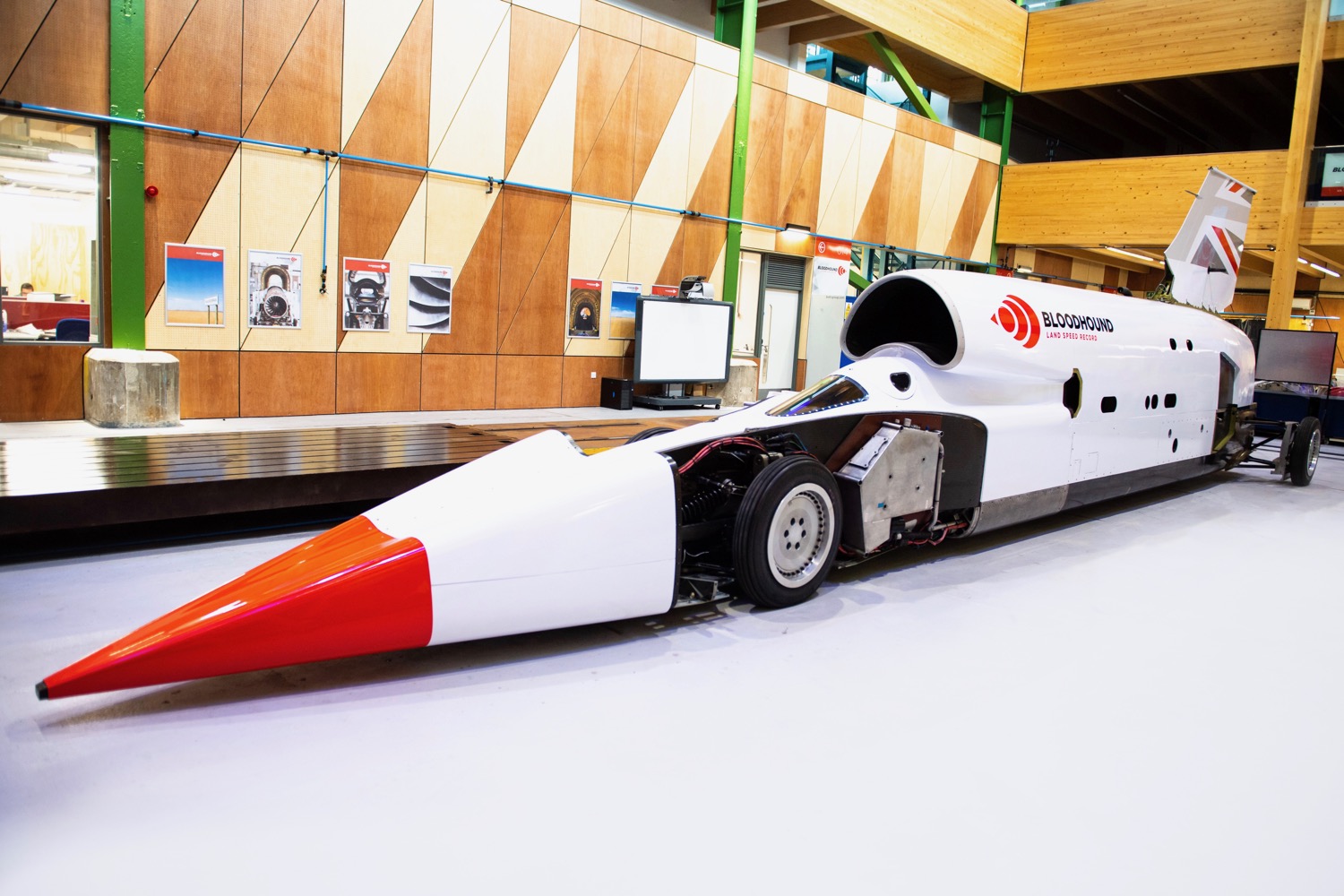
The Bloodhound LSR (short for land speed record) was built to break the 1,000-mph barrier for cars. That would make Bloodhound the fastest wheeled vehicle ever. But the project came to a halt in late 2018 due to a lack of funding. Now under the ownership of British businessman Ian Warhurst, Bloodhound is back from the dead, and ready to resume testing.
Previously known as the Bloodhound SSC (for supersonic car), the car will soon depart from its home base in England to South Africa’s Hakskeenpan desert, where the team plans to make its record attempt. For now, though the car will only make a series of test runs, with a maximum speed of 500 mph. The Bloodhound team plans to make 13 runs over a period of about one month, increasing the speed by 50 mph each time.
The team plans to gradually work its way up to a record attempt. These tests will show how the car behaves at speeds between 300 mph and 500 mph. The team already knows how the car works at lower speeds, as it hit 210 mph in a previous test in 2017. In the higher speed tests, the Bloodhound will run on solid aluminum wheels for the first time. The all-metal wheels were designed to handle high-speed forces that would shred conventional rubber tires.
The Bloodhound is powered by a combination of jet and rocket engines. A Rolls-Royce EJ200 jet — the kind normally found in a Eurofighter Typhoon fighter plane — gets the car up to 300 mph. From there, a series of hybrid rockets from defense contractor Nammo kick in. All told, the 44.3-foot Bloodhound has 135,000 horsepower on tap, according to the team.
Before leaving for South Africa, the team conducted a “dry crank” test of the jet engine. Team members ran through the startup sequence and turned the engine over, without any fuel pumped in, just to make sure the jet would work onsite. As with commercial jet aircraft, Bloodhound uses a smaller jet engine to start the car’s big jet.
If the latest tests go well, the Bloodhound car will be back in South Africa within 12 to 18 months for a land speed record attempt, according to the team. The car will be driven by Andy Green, who set the current car speed record of 763 mph in 1997.


